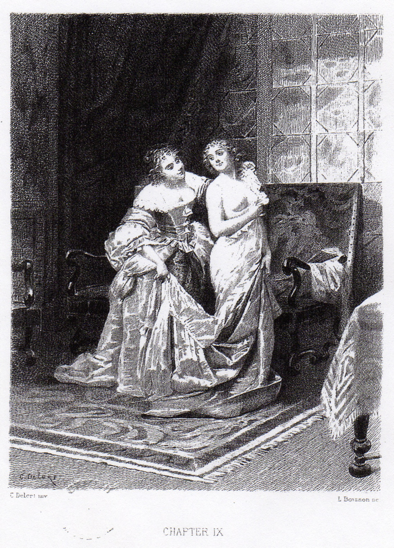Readings:
➢ Anthony Hamilton, Memoirs of Count Grammont, selections
➢ Edward Wettenhall, Enter into thy Closet, selections
|
|
Excerpts from Anthony Hamilton’s Memoirs of the Count Grammont, a secret history of the Restoration court, and Edward Wettenhall’s Enter into thy Closet, a frequently republished prayer manual, open up distinctive but overlapping modes of political and spiritual privacy: court favouritism and closet devotion. At court, decisions about when and to whom to grant access to the closet were exercises in arbitrary power and the status and roles of secretaries and other royal favorites were explicitly defined in relation to the closet. As one sixteenth-century secretary had put it: “To a Closet, there belongeth properly, a doore, a locke, and a key: to a Secretorie, there appertaineth incidently, Honestie, Troth, and Fidelitie.” We consider the many examples of closet relations in Hamilton’s Memoirs, focusing on (1) a funny and puzzling episode involving the Duchess of York, Miss Hobart (the Duchess’s favourite), Miss Temple (the Duchess’s favorite’s favorite), and the Restoration’s most notorious rake, the Earl of Rochester (Figures 11 and 12), (2) the author’s bond with his biographical subject, his brother-in-law Philibert de Comte de Gramont, and (3) the virtual transfer of favor to readers throughout this text and in the genre of secret history in general. We especially consider the politics of same-sex closet relations: Who gains what through relations of patronage and favoritism between people of the same sex? Under what circumstances and in what way do these relationships become erotic? What are the broader social and political implications of this kind of ambitious intimacy? At first glance, the prayer closet seems a very different space from the courtly closet. Satisfying the basic Protestant impulse to strip away Catholic mediations, the King James translation of the Bible (1611) gave a new specificity to the injunction to pray alone in Matthew 6.6: “But when thou prayest enter into thy Closet…” Along with new modes of self-examination, closet prayer formalized a special kind of closeness to God and Jesus. With reference to Wettenhall’s manual, we parse out the key components of closet prayer and the interesting notions of time and timelessness associated with this practice. Wettenhall writes that the most powerful prayers belong to those “whose daily and frequent application of themselves to the throne of grace hath rendred them there well acquainted and favourites” (29). Students are asked to think about how the discourse of favouritism connects the prayer closet to the courtly closet. We also discuss the homoerotics of closet prayer with reference to Richard Rambuss’s Closet Devotions, which argues that the prayer closet was an important site for the internalization of sexuality.
Suggested Presentation Topics: The history of court favoritism
Fig. 13: Enter into thy Closet.
|




